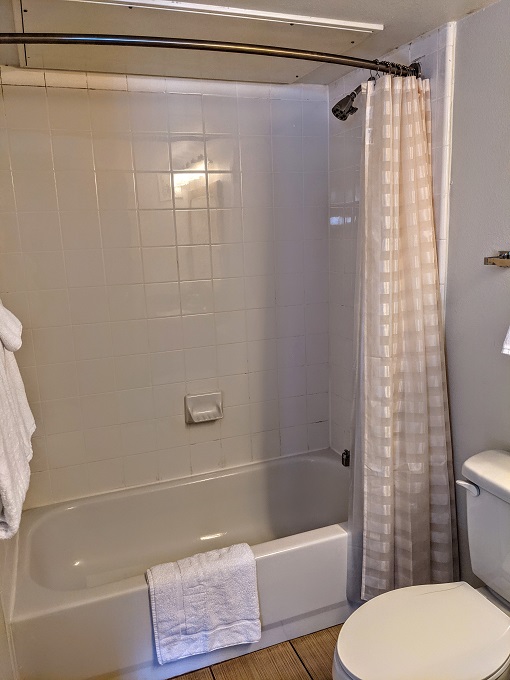Table Of Content

In calculations of drying time of standardized prewashed hair samples, it earned a perfect score, outperforming every other hairdryer tested. It also received high marks for its strong airflow and simple to operate buttons and attachments. To compile this list, our team of editors and contributors spent hours researching the best shears on the market, evaluating their key features in addition to reviews from customers and other trusted sources.
The 10 Best Hair Clippers for DIY Buzz Cuts and Shape-Ups - GQ
The 10 Best Hair Clippers for DIY Buzz Cuts and Shape-Ups.
Posted: Tue, 17 Oct 2023 07:00:00 GMT [source]
Remington Virtually Indestructible Haircut and Beard Trimmer
Secondly, they’re adjustable—from fine to coarse, or size 000 to 1, making them more versatile than ever. For the past decade, they have written about and tested beauty products for Teen Vogue, Allure, and other outlets. They’re currently working on a nonfiction book about the beauty industry, The House of Beauty, to be published by Norton. Most manufacturers also recommend that, following a haircut, you wipe away loose hairs with a stiff bristle brush (almost always included along with oil), followed by another oiling to prevent potential surface rust.
How to Maintain Hair Clippers at Home?
To take it a step further, extra small trimmers allow extreme precision and are typically used to carve intricate designs into the hair. Before getting started, hairstylist Merrell Hollis suggests investing in a three-way self-grooming mirror. "The mirror has three panels for a 360-degree view of your head, which allows you to see exactly where you are cutting from three different angles," says Hollis. Touch-up frizzy ends with ease with the help of these right-handed scissors that are made entirely of Japanese stainless steel.
11 Best Manscaping Tools 2024 The Strategist - New York Magazine
11 Best Manscaping Tools 2024 The Strategist.
Posted: Thu, 18 Apr 2024 07:00:00 GMT [source]
Wahl Elite Pro High Performance Hair Clipper Kit
Buzz cuts are a general style and have a ton of variations, so before firing up the clippers, consider the final outcome you’re hoping for. We've been using this product since 2017 and found the most valuable feature are the blades. Firstly, they are overlap blades, which means they’ll bring precision and details to your lines and edges.
At USC, arrests. At UCLA, hands off. Why pro-Palestinian protests have not blown up on UC campuses
They work exactly the same as clippers but are much smaller to really get in those tight spots. The best part of hair cutting shears is that they’re crafted to slice right through without bending or folding the hair. In fact, they need to be sharpened every so often to stay in tip-top shape. Hair clipper oil—which probably already comes in the hair clipper set you purchase—is vital for upkeeping the blades. Oiling them can curb friction which might corrode the blades, prevent them from overheating, and ensure that they'll last longer.
To be completely honest, when I first started doing hair, I used some really cheap, crappy thinning shears that probably came with my beauty school kit. I always felt like they were something that wasn’t worth investing in. Shears are the most basic and commonly-used tools to cut hair… but they’re a lot more complex than your basic kitchen scissors. The Bevel Pro is beloved by many expert groomers including celebrity barber Marcus Harvey, who has been putting the clippers to work for roughly two years now. After testing them out, he found "there is indeed a learning curve of using one tool instead of multiple. However, once you get past that challenge, you’ll get the hang of it and know your settings." Almost all of our testers recommended Wahl's Chrome Pro for its budget-friendly price point, and no-nonsense design that easily plows through hair for a cheap, efficient buzz cut.
Thinning/Texturizing Shears
Emily Algar is an Australia-based journalist and beauty expert specializing in product reviews. Her work has been published in MyDomaine, Who What Wear, and POPSUGAR. The type of tool used to cut your hair determines the whole outcome of your haircut; knowing the difference between each instrument is vital.
A smaller clipper
With blades that are adjustable and zero-gap, let's just say for close trims, this clipper doesn’t miss. Unlike with beard trimmers, with hair clippers there aren’t a lot of good-quality traditional reviews available (though there is an unbelievable wealth of information, including reviews and clipper-technique tutorials, on YouTube). We also relied on input from guides published by Buzzcut Guide and Balding & Beards, and we consulted thousands of detailed customer reviews. The set also includes a cleaning cloth, a grooming comb, two hair pins and a carrying case. It’s important to know what all the different hair cutting tools are, what they’re used for and even how to use them.
Remington Pro 1" Pearl Ceramic Flat Iron

To use hair clipper oil, simply wipe-clean the blades then apply the oil directly onto the blade, and turn on the motor for a few seconds. Similarly, the Wahl Deluxe Chrome Pro is a 25-piece kit that, like the Andis Headliner Combo, has flimsy guide combs that didn’t seat reliably for us. The included battery-operated trimmer is useful and is in fact a missing element from our top pick. GH Beauty Lab scientists test hair styling tools both using technical instruments in the Lab and with consumer or expert testers.
As a result, it’s far easier than any other model we tested to maneuver and hold in a loose grip, even with fingertips (as is often required when you’re clipping your own hair). This clipper comes with eight rigid-plastic, quality guide combs that seat securely (though they have fewer tips, slightly sharper in feel, than our main pick’s combs do). This model also has a thick but pliable 8-foot cord and a powerful—but exceptionally quiet—motor, making it a solid choice for cutting kids’ hair. Cutting your own hair isn’t terrifically hard, but it is easy to mess up. And one way to really mess up is to cut hair without using the right tools.
That said, Pags says "there’s no specific brand" she wholeheartedly recommends. "I look for quality metal, blade length, and blade types." You'll also want to keep in mind specifics like blade size, and whether you want one designed for cutting wet hair or dry hair. "Understanding how you’re going to use your tool will help when making your purchase," says the pro. We've tested many Wahl clippers and understand why barbers rely heavily on them to get the job done. They make at-home grooming much easier with minimal maintenance and three attachment comb cutting guides. Eric Becker of Blind Barber says regardless if you choose "either corded or cordless, [it] is the best all around clipper for taking care of your hair or beard."
Kamisori is a leading brand of hair cutting shears, and the award-winning Diablo model is a top choice for professional hairstylists across the world. As far as cheaper options go, some high-quality stainless steel shears from the drugstore will get the job done, so long as they're the right size. You won't have to worry about losing your grip on these professional-level hair cutting scissors, since they're lightweight and designed with grippy finger loops, making them easier to control as you cut. Additionally, hair clippers are designed to be used on longer, thicker hair, whereas beard trimmers are meant for shorter, thinner trims. Which is why while you can certainly put hair clippers to work on your jaw or chin, the same can't be said otherwise. One of the draws of this clipper is the sleek, modern design and luckily, that newfangled look doesn’t take away any of the cutting power or the features that you actually need to effectively cut hair.
Barber Eric Aleman cautioned in particular that should you ever drop a clipper, be sure to immediately inspect the blade for any bent or (especially) broken teeth. If the blade isn’t replaceable, recycle or toss the clipper, and be sure to cut the power cord to ensure that someone else who might find it doesn’t use it unknowingly. Though this model lacks a taper lever for finessing a fade or blend, most of our testers didn’t miss it for at-home uses (none of our haircutting novices attempted to do their own fades). As is true of blades, when it comes to motors, most home users wouldn’t notice much difference between types—other than their loudness. Magnetic motors, which all our picks have, are the most common and make a signature whap noise when turned on.























